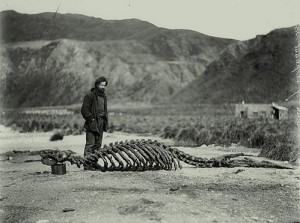Notes on a talk by Michael Stone at Centre of Gravity, Toronto, June 26, 2012.
Categories
The nature of mind is to take a snapshot of whatever arrives in this moment and create categories. No wonder it’s so hard to die. These categories get linked up and become parts of systems. I look out my window and all I can see are systems, layers, boxes inside boxes. I’ve got you filed here somewhere. The problem is a system can’t contain everything. As soon as you build a container stuff spills out. In Tantric Yoga this is called shesha. This is what doesn’t fit into categories, what keeps leaking out of containers. Perhaps the entire world is shesha. Have you ever noticed that about a person? You’ve just folded them up into a tight little box and then they do something completely unexpected. Oh, you’re a loving dad. And then you’re left with shesha. How does shesha show up physiologically? As jiva or the tongue. The mind tries to go after whatever is in present experience and turn it into categories and abstractions. Say you walk into a beautiful church, there is incense and lovely light. Your whole face is a wow. Then the mind wants to put a context around that experience. This is just like the time I… This is even better than the time I… You have the experience of awe, but not the experience of the mind state itself, the mind turning into awe, because it becomes a pattern maker again, a category maker. That’s why we always see what we already know. Perception is one long confirmation. Yes. Yes. Yes. I know what I like means I like what I know. In other words, the category asserts itself over the experience. Our patterns function to contain experience. They keep us small and separate.
Tongue
We’re engaged in a devotional practice, we’re turning whatever shows up in awareness into a deity. If awareness can’t burn up something it shows up as residue in your tongue. So we make a deity out of our tongue. This is incidentally why releasing your tongue during sitting practice is such a great technique. You can do this by holding a slight smile on your face, a Mona Lisa smile, this ensures the tongue is released. As soon as the thoughts begin the smile is gone and the tongue gets tight. In our devotional practice the tongue is the central axis. The skeleton is holding the pose while the inner body is letting go, and the mind stops putting everything into categories. The mind slips into the pure feeling of breathing, then it gets scared and wants to plug that into a new category. Oh this is so spiritual. Can I make money from this feeling? The Buddha was enlightened under a tree and then someone wants to sell you a ticket to touch the tree.
Mindfulness
As some of you know I work with clinicians and they seem to be abuzz with mindfulness these days. I wonder: what’s it all about? Mindfulness and dying are twinned in many ways. Mindfulness comes out a Buddhist tradition and a little out of a Yoga tradition. Mostly the way it’s defined these days is paying attention on purpose without judgment. Creating categories, for instance, is a way of exercising judgment.
Mindfulness is not a concept or a new paradigm for how you look at things. And it’s not a technique. It means living fully so that your whole body and heart are generous. How can you die well? We often think of death as taking something away. When you’re dying it doesn’t matter how much money you have, or if you’ve had great success. What you’ve achieved doesn’t matter much. The only thing that matters is the state of your heart. Dying isn’t taking away, it’s a final act of generosity. To take your last breath and give it away.
Bernie Glassman told me this story on the way to the airport. His pal Allan Ginsberg had gone to see his doctor who told him he had a month to live. He went home and started working through his phone book and called everyone he knew and asked them, “I’ve only got a month left to live. What can I do for you?”
Whatever is showing up we’re fully devoted to that moment. That’s so much more than paying attention. In the Buddha’s teachings on mindfulness he begins by paying attention to the body, looking at all the parts of the body. He invites us to notice how they’re all impermanent. To feel this. To touch this. To touch the fading away of everything. These are the instructions we need to live and to die. To be fully here.
2 Zen Stories
There is a student and teacher together, the teacher is actively dying and in pain. The student asks: “Can you contact the one in you that’s not dying?” The teacher answers, “Yes.” The student asks, “Can you look at the one who is not dying?” The teacher answers, “Yes, he looks back at me.”
A century later there is another story. The student asks: “How does dying feel?” The teacher answers, “I’m in pain.” The student asks, “Can you see the one who is not in pain?” The teacher answers, “Ahhhhhh.”
That’s a better lesson, isn’t it? It’s not so idealistic. The student’s questions ask: what happens when you look at that place in your heart where you’re not in pain? (Every spiritual tradition promises us this experience.) But this is dualistic. What do you really feel in this situation? It just hurts. Can you be in that without adding anything to it? Science has become so good at relieving pain, but we’re still trying to work with suffering. How can we be with suffering?
Sometimes I would like to replace the word ‘mindfulness’ with the word ‘mourning.’ What is your practice? Mourning. Mindfulness means being present not only to the arising but also to the passing away. Usually on the crest of arising there is already something new coming along. We need to feel the dissolution, all the way down to the end of the exhale.
You Are Going To Die
Here is a partner exercise. Sit face to face with your knees close. Really give them your face, show what you’re feeling, put away the smooth mask, your social face. One person will say, “You are going to die,” and the other will say whatever comes to their heart. Maybe they’ll say, “I’m not ready.” You’ll say, “Thank you, and then you’ll say again, “You are going to die.” To be spontaneous is to be generous. We’ll do five minutes with one person asking, then five minutes with the other person.
Afterwards they said
“It takes a while to be spontaneous, to say something that surprises.”
“I didn’t want the responsibility of telling someone they were going to die.”
“I got sweatier and sweatier and found it hard to stay inside myself. There was nowhere to run to. A wall of pressure.”
“Close to tears, and then that passed too.”
“I thought I was going to be sad, but found I wasn’t. There was the cultural pattern of how I was supposed to feel, and I had to reach through it to find what I actually felt. Perhaps practice means simply catching up to what you actually feel, instead of living in your descriptions of what you feel.”
Tylenol
Ikkyu (born 1394 in a suburb of Kyoto) was an iconoclastic Rinzai Zen monk. Ninakawa was a great master of a monk and he was dying. Ikkyu asked him, “Shall I lead you on?” Ninakawa replied, “I came here alone and I go alone. What help could you be to me?” Ikkyu answered, “If you think you really come and go, that is your delusion. Let me show you the path on which there is no coming and going.” Ninakawa immediately understood and smiled. And then he died.
Mindfulness cures everything. It’s the new Tylenol. It’s not Buddhist, it’s showing us how to live generously. Every culture the world over would agree that this is a really valuable quality: to show up with generosity. We make that into a practice. We set an intention. This is something we need to cultivate. To walk out tonight and really appreciate your life. That’s so much better than enlightenment.




